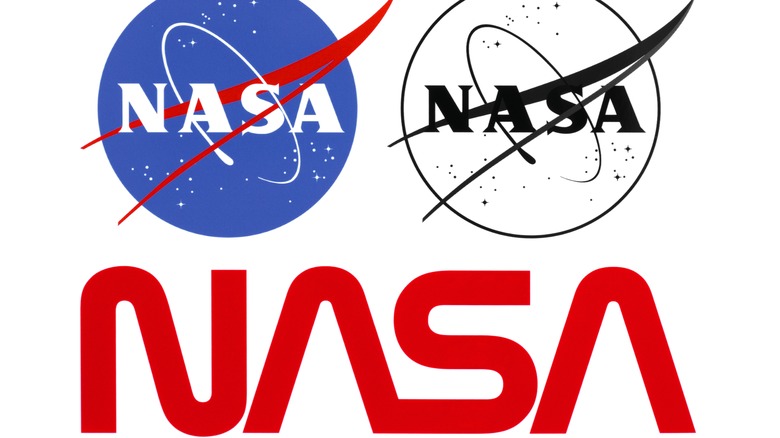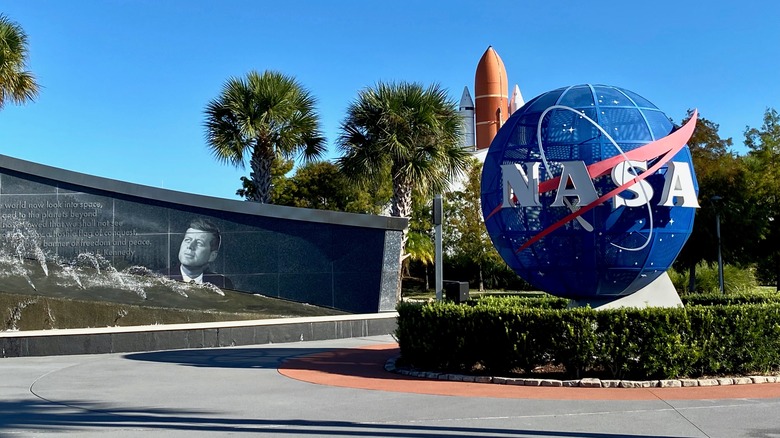What Does NASA Stand For, And Was It Originally Called NACA?
There are few acronyms as widely recognized and iconic as NASA ("M*A*S*H" may come close, but this isn't the place to discuss Alan Alda's masterful portrayal of Hawkeye). The illustrious space organization put humankind on the moon in 1969, and the nation — the whole world — mourned with it following the tragic losses of the crews of Space Shuttles Challenger and Columbia in the decades that followed.
There can be no loftier ambition than to strive to learn more about the planets and celestial bodies that surround us, and this is one of the National Aeronautics and Space Administration's primary objectives. Since its inception, the organization has been at the forefront of aerospace technology, and has pioneered projects that advance our knowledge of our own planet, as well as regions far beyond.
All of these factors are emphasized in the name of the organization, though it has also been referred to by a far lesser-known acronym: NACA.
NASA stands for National Aeronautics and Space Administration
The National Aeronautics and Space Administration was created in 1958. The birth of the new organization came about after the National Aeronautics and Space Act of 1958 was signed. A statement issued by President Dwight D. Eisenhower marked the historic occasion, which took place on July 29 that year.
"The enactment of this legislation is an historic step, further equipping the United States for leadership in the space age," Eisenhower stated. "I wish to commend the Congress for the promptness with which it has created the organization and provided the authority needed for an effective national effort in the fields of aeronautics and space exploration."
Almost 70 years later, as Eisenhower promised, NASA remains a behemoth and world leader in its field. Its scientists, technicians, astronauts, and wide array of other talents continue to innovate and to achieve. In October 2023, for instance, an investigation of Psyche — seemingly the metallic core of an enigmatic planet — is scheduled.
Before NASA as it's known today was formed, NACA laid the foundations upon which it so successfully built.
What was NACA?
Technically, the history of NASA didn't begin in 1958. The previous chapter of the organization's story began way back in 1915. This was the year NACA, or the National Advisory Committee for Aeronautics, was created. According to NASA, the leaders of this precursor organization were selected by the President, and in turn directed different aspects of the work NACA did at the Langley Aeronautical Laboratory, Ames Research Center, and Lewis Research Center. This advisory board ultimately directed the research performed in different areas that would eventually fall under the purview of NASA in the future.
When NASA was created over 40 years later, it marked the end of NACA, but the former had a fantastic body of knowledge and the aforementioned research centers to develop from upon absorbing the organization.
It's NASA's bold image of the future that may soon see humanity landing on Mars, perhaps in massive crews of 86-seater space shuttles. Innovations like the EOSDIS WorldView satellite program continue to teach us more and more about the Earth, and it's perhaps thanks to NACA that the modern-day National Aeronautics and Space Administration has reached the heights it has.


